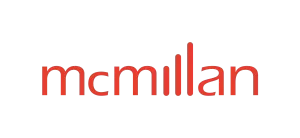- within Intellectual Property topic(s)
- with Senior Company Executives, HR and Finance and Tax Executives
- in Europe
- in Europe
- in Europe
- with readers working within the Law Firm industries
In the recent decision of Bachand c. Mural, 2025 QCCQ 3060 ("Bachand"), the Court of Quebec's Small Claims Division found that the erection of a new building that obstructed the view of a mural was a violation of moral rights under the Copyright Act.1 In this bulletin, we provide an overview of the decision in Bachand, discuss prior treatment of murals and moral rights, and explore the practical implications of the decision on construction projects and beyond.
What are Moral Rights?
Moral rights are a set of rights ancillary to copyright, available to the author of a work owed copyright protection pursuant to the Copyright Act, held by an author of the work with respect to the dignity of the author in association with the work.2 Moral rights are recognized in various forms in different jurisdictions. In Canada, moral rights are protected under section 14.1(1) the Copyright Act,3 which can be summarized as follows:
- An author of a work has the right to the integrity of the work; and
- An author of a work, where reasonable in the circumstances, has a right to be associated with the work by name or under a pseudonym and the right to remain anonymous.
The right to the "integrity of the work" can be infringed if a work is, without the author's consent, (i) distorted, mutilated or otherwise modified, or (ii) used in association with a product, services, cause or institution without the author's consent to the detriment of the author's honour or reputation.4 It is important to note that moral rights in Canada cannot be assigned, but can only be waived.5 Therefore, an assignment of copyright is not enough to waive any existing moral rights.6
The Bachand Decision
In the Bachand decision, Mural, a non-profit organization that promotes artistic life in Montréal, entered into a contract with Mr. Farasat, the owner of a building with a wall that was highly visible to the public, for permission to produce a work on said wall (the "Building Contract"). Per the terms of the Building Contract: (a) Mural would produce a work that would last at least a period of one year after the creation of the work; and (b) Mr. Farasat would not alter the work for at least one year after the creation of the work (collectively, the "Restrictive Terms").
After entering into the Building Contract, Mural retained Mr. Bachand to produce a mural (the "Work") on the wall of the building in exchange for $1,500 (the "Artist Contract"). The Artist Contract stated that all intellectual property rights in the Work would remain with Mr. Bachand. However, Mural did not make Mr. Bachand aware of the Restrictive Terms that Mural had agreed to in the Building Contract.
Pursuant to the Artist Contract, Mr. Bachand created the Work which covered almost the entirety of the wall of the building. However, in 2024, another building was constructed next to the Work, covering almost the entirety of the Work from view. Only the upper part of the Work remained visible, but only from a distance.
The court determined that: (i) the Work fell under the definition of "artistic work" under the Copyright Act;7 (ii) because Mr. Bachand had not waived his moral rights in the Work, he was therefore entitled to the integrity of the Work;8 and (iii) Mural was obliged to inform Mr. Bachand of the Restrictive Terms. While Mural did not participate in covering the Work, it did agree to the Restrictive Terms which gave Mr. Farasat the right to alter the Work. As a result, the court found that Mural bore responsibility towards Mr. Bachand and held that Mural infringed on Mr. Bachand's moral rights in the Work.
Moral Rights and the Concealment of Murals
The jurisprudence in Canada on moral rights related to murals, graffiti or street art is scant. Moral rights are also treated differently in Canada than they are in the US.
In the United States, there have been more reported decisions. However, the requirements to prove moral rights are higher and the damages are fewer. The following decisions relate to the moral rights protections afforded to visual arts (e.g., murals):
- In an example, in Castillo v. G&M Realty L.P. ("Castillo"),9 building owners had whitewashed the walls of a New York City warehouse and tourist attraction, commonly known as "5Pointz," which were "filled with aerosol art".10 The US court in Castillo found that the whitewashed works were of "recognized stature," and the plaintiff artists of 5Pointz successfully recovered statutory damages under the Visual Artists Rights Act of 1990 ("VARA").11
- In another example, in Kerson v. Vermont Law School, Inc. ("Kerson"), 12 a mural inside a law school building, which was initially painted to commemorate the State of Vermont's participation in the abolitionist movement, became controversial due to its manner of depiction of enslaved people. In response, the law school set up acoustic panels in front of the mural to hide it from public view. The US court in Kerson held that concealing murals behind acoustic panels did not violate moral rights, since it did not constitute "destruction" of the work, which is a requirement under US law pursuant to VARA.
The Canadian decision in Bachand therefore contrasts with the US decision in Kerson in that, per the Canadian courts in Bachand, obstructing the view of visual art, which includes street art, can amount to a violation of moral rights in Canada as it violates the right to the integrity of the work.
Practical Takeaways
The Bachand decision suggests a need for stakeholders to consider the intellectual property rights that may be associated with a work of art applied onto the surface of a structure. Moral rights associated with a work are separate and distinct from the economic rights and copyright that may be associated with the work. Because moral rights cannot be assigned but only waived in Canada, without a clear, written waiver, organizations may have limited mechanisms for revising or removing works.
Construction Undertakings
In construction undertakings, moral rights considerations can occur in two main ways, regardless of whether the project includes the construction of a new building or involves renovations to an existing facility. First, there are considerations related to moral rights of third parties. Owners undertaking a project may wish to consider auditing surrounding buildings to check for any visual artwork, a significant architectural feature or a sculpture that could be hidden from sight as a result of the project.
Second, owners must be mindful of the moral rights that may affect new works that are created in the course of the project. Architects, designers and visual artists may have rights in parts of the project that they contributed to. Owners undertaking construction projects may wish to confirm whether they have obtained proper waivers of such moral rights to ensure they would be able to freely use or alter the work in which moral rights may subsist.
Visual Works Intended for Public View
While the decision in Bachand relates to the moral rights owed to the artist of a mural, moral rights subsist in all original artistic, literary and dramatic works where copyright is owed. Examples of works include:
- written manuals and articles,
- computer programs (source and object code),
- drawings, maps, charts and photographs, and
- musical works and sound recordings.13
In general, when visual works intended for public view, including decorative artwork, advertisements and possibly online content, are created pursuant to a contract, it is crucial that the contracting parties address the moral rights associated with such works.
Conclusion
When commissioning artistic or literary works including murals, organizations should review and consider the intellectual property and ancillary rights associated therewith. Artists should also be aware of the rights they maintain when works are commissioned, so that they can protect and enforce those rights in their best interests. McMillan LLP's Intellectual Property and Construction & Infrastructure groups can provide cutting-edge cross-practice advice for navigating the impacts of intellectual property law considerations on construction and infrastructure projects.
Footnotes
1 Copyright Act, RSC 1985, c C-42, s 14.1(1).
2 "Moral rights [...] adopt a more elevated and less dollars and cents view of the relationship between an artist and his or her work. They treat the artist's Suvre as an extension of his or her personality, possessing a dignity which is deserving of protection. They focus on the artist's right (which by s. 14.1(2) is not assignable, though it may be waived) to protect throughout the duration of the economic rights (even where these have been assigned elsewhere) both the integrity of the work and his or her authorship of it (or anonymity, as the author wishes)." (see Théberge v. Galerie d'Art du Petit Champlain inc., 2002 SCC 34, paragraph 15).
3 Copyright Act, RSC 1985, c C-42.
4 Ibid, ss 28.1, 28.2(1).
5 Ibid, s 14.1(2),
6 Ibid, 14.1(3).
7 ibid, at s 2.
8 Ibid, at s 14.1.
9 Castillo v. G&M Realty L.P., 950 F.3d 155 (2d Cir. 2020), as amended (Feb. 21, 2020).
10 Ibid, at para 2.
11 Visual Artists Rights Act of 1990, 17 U.S.C. § 106A.
12 Kerson v. Vermont Law School, Inc., 79 F.4th 257 (2d Cir. 2023).
13 Copyright Act, RSC 1985, c C-42, s 5.
The foregoing provides only an overview and does not constitute legal advice. Readers are cautioned against making any decisions based on this material alone. Rather, specific legal advice should be obtained.
© McMillan LLP 2025





